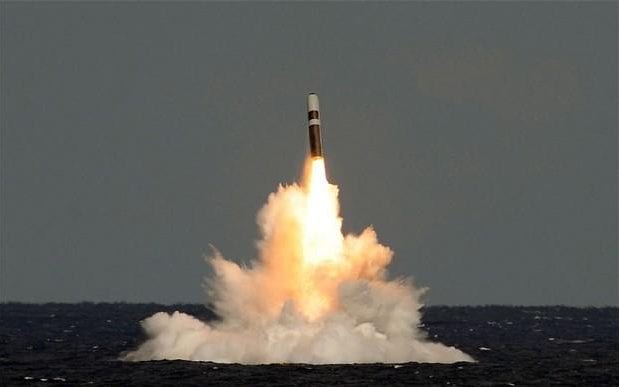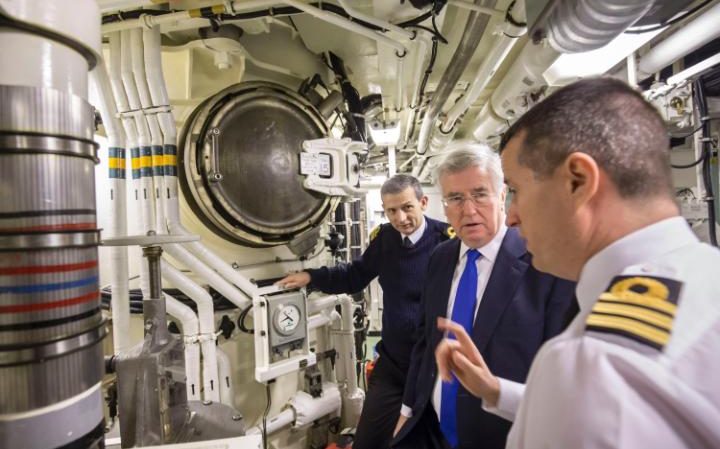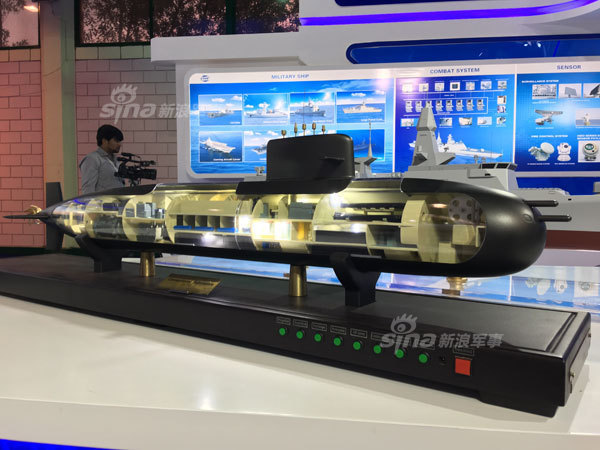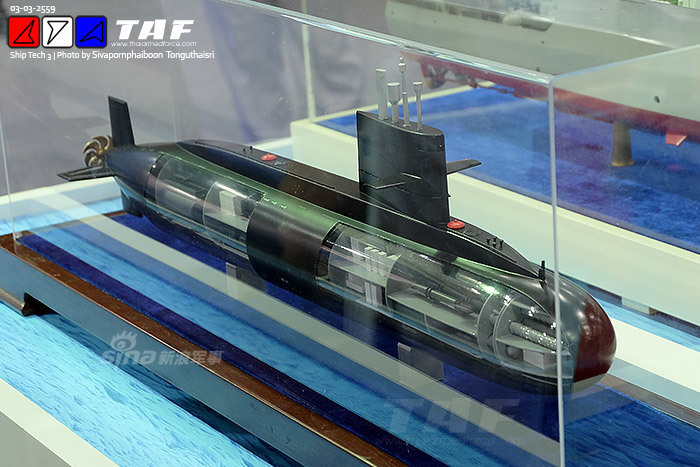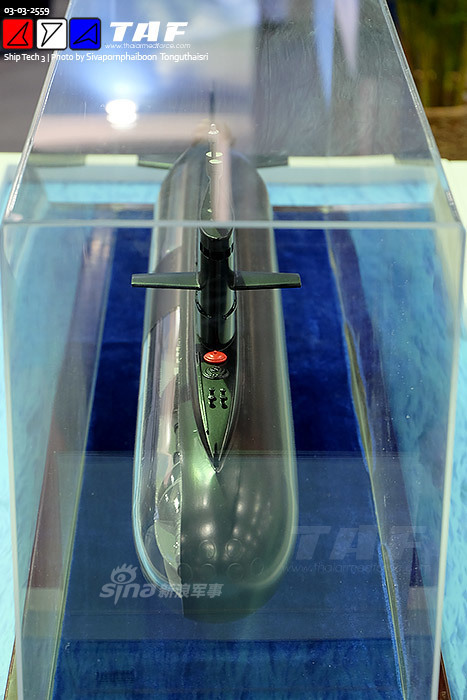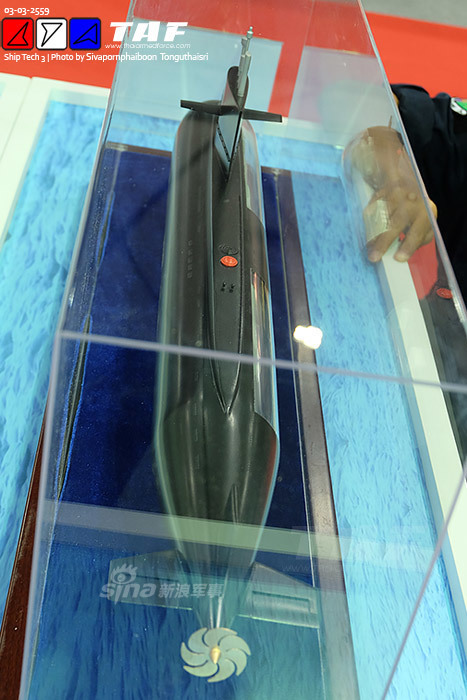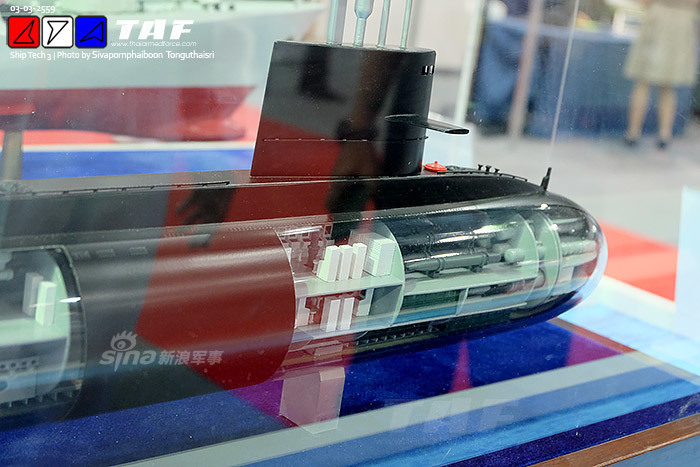Salaam 
Interesting discussions (above).....would it not be prudent for Pakistan to devise or upgrade its systems to ensure that deterrence works - not just for regional purposes?
Examples of the UK and France is a good role model in this direction....4 submarines equipped for nuclear delivery....essential purpose to deter any would be aggressors???
see article below:
ref:http://www.telegraph.co.uk/news/2016/03/21/what-is-trident-britains-nuclear-deterrent-explained/
What is Trident? Britain's nuclear deterrent explained
What is Trident? Britain's nuclear deterrent explainedPlay!01:14

Sponsored
How to maintain a healthy weight
When it comes to managing your weight, there isn’t a one-size-fits-all policy
Read more ›
18 JULY 2016 • 1:10PM
What is Trident?
Trident is Britain's nuclear weapons deterrent. It consists of four Vanguard-class submarines which can carry up to 16 Trident II D5 ballistic missiles, each armed with up to eight nuclear warheads.
At any time, one submarine is on patrol, one is undergoing maintenance, one is preparing for patrol and one has just come off patrol and is recovering.
Britain has had a Continuous At Sea Deterrence (CASD) since 1969. Trident is currently referred to (in defence speak) as Operation Relentless and is based in the Faslane area of Scotland.
Nuclear weapons: which countries have what?
HMS Vanguard is Britain's lead Trident-armed submarine
Will renewal get the green light?
Almost certainly. The current fleet, which has been in operation since 1992, needs to be phased out in the 2030s. It will take up to 17 years to replace the submarines, which means the final decision on renewal needs to be made this year.
Carrying out the vote, which takes place on Monday, July 18, will be one of Theresa May's first major jobs as Prime Minister.
Fallon: This is the wrong time to dispense with TridentPlay!01:41
The Government has estimated four new submarines - which should have a lifespan of at least 30 years - would cost £31 billion spread over 35 years with a £10 billion contingency.
This amounts to 0.2 per cent per year of government spending. The annual running cost is expected to be about the same as it is now - representing about six per cent of the government's defence budget.
Before Trident, there was Polaris which operated on four submarines between 1962 and 1992.
Read more: The case for renewing Trident is irrefutable
Who wants to renew it?
Mrs May has been clear about her desire to renew Trident. Former prime minister David Cameron also wanted to renew the controversial programme, calling it an "insurance policy" for Britain. Replacing it was a Conservative manifesto pledge in the 2015 general election.
The Labour Party also supports Trident, however leader and life-long pacifist Jeremy Corbyn has
proposed to have Trident submarines without nuclear missiles, adding that he would never
“press the button” to launch nuclear weapons. He is currently vice-president of the Campaign for Nuclear Disarmament (CND).
Watson: Corbyn is wrong over TridentPlay!01:23
Two thirds of Labour MPs are expected to vote against him at Monday's vote. Two of the country’s biggest trade unions – Unite and GMB – which have supported Mr Corbyn during his leadership crisis so far are expected to back keeping Trident too because so many jobs rely on it.
The Scottish National Party and the Green Party are opposed to Trident. The Liberal Democrats want to end 24 hour patrols and cut back the number of submarines, believing they're designed for a Cold War threat that no longer exists.
Jeremy Corbyn at a rally opposing the renewal of Britain's Trident nuclear system. CREDIT:AFP
Do we need nuclear weapons?
It depends who you ask - according to the UK Government we do. It argues that Trident is "vital" for our security because since the end of the Cold War the number of nuclear armed states has grown, nations are modernising their weapons and we need to be ready for any unsuspecting nuclear threat to the UK over the next 20 to 50 years.
Nuclear defence is also a big employer - it currently supports approximately 30,000 UK jobs.
People and campaign groups who oppose Trident argue having nuclear weapons is immoral and that the more nations that possess them, the more likely they are to be used. They also argue that threats to the UK come from other sources that don't require a nuclear deterrent, and point out that money spent on Trident could be better spent elsewhere - including maintaining and improving conventional methods of defence.
How powerful is Trident?
No one knows exactly, but most nuclear weapons are approximately seven times more powerful than the atomic bomb which was dropped on the Japanese city of Hiroshima in 1945.
Trident's ballistic missiles can hit a target up to 7,500 miles away and travel at speeds of more than 13,000 miles an hour.
What do we know about the submarines?
The UK's Vanguard-class submarines are called HMS Vanguard, HMS Vengeance, HMS Victorious and HMS Vigilant. They are huge - measuring more than twice the size of two Boeing 747s. Each contains a nuclear reactor which boils sea water and the steam is used to power them through the water.
The patrols are so secretive that only four among the crew of 135 know what route the submarine will take, on voyages lasting months.
Are there any alternatives?
The government said in its 2013 Trident Alternatives Review that no alternative system is as effective or capable as the current Trident system, or as cost effective.
Cruise missiles have been considered but they were deemed too slow and with a far shorter range and easy to intercept. There's also been talk of a land-based delivery system, negating the need for submarines, but both of these options have been deemed too expensive in the long-run.
Who can launch the weapons?
Only the UK Prime Minister can authorise the launch of nuclear weapons. The PM's order to fire is sent to a strategic headquarters and then transmitted by several paths to the submarine in coded messages.
At each stage below Prime Minister there are two people in the firing chain, ensuring no single person can launch a nuclear attack. Once the message arrives at the submarine, it must be decoded to ensure it is authentic.
The command that no one among the crew wants to hear would then be given: “Actions stations, missile for strategic launch.”
Every PM must write four "letters of last resort" which are kept secret in a safe on board each submarine in case there's a devastating nuclear attack on the UK.
They are only allowed to be read in the event that the Prime Minister and his second-in-command are killed and Westminster is wiped out. The submarine commander will then carry out a series of checks (including seeing if BBC Radio 4 is still broadcasting), read the note and then carry out the final orders. When a new Prime Minister is appointed, the letters must be destroyed so only they know their contents.
Defence Secretary Michael Fallon inside HMS Vigilant in the missiles compartment.CREDIT: PA
Who is in the nuclear weapons club?
Nine countries have nuclear weapons: The US, Russia, UK, France, China, India, Pakistan, Israel and North
Korea.
The UK is one of five countries along with the US, China, Russia and France formally recognised as a ‘Nuclear Weapon State’ under the Nuclear Non-Proliferation Treaty (NPT), which aims to limit the spread of nuclear weapons.
The NPT was negotiated in 1968 and all members agreed to the three pillars - working towards disarmament, non-proliferation, and peaceful nuclear technology. In return the non-nuclear signatories to the Treaty (every other country in world bar India, Pakistan, Israel and North Korea, all of whom possess nuclear weapons outside the Treaty) agreed not to acquire nuclear weapons.
In line with this, Britain cut its operational warheads from 160 in 2010 to 120 in 2015, and slashed the number of warheads on patrol from 48 to 40 in the same period.
It's worth noting that the UK has significantly fewer nuclear weapons than the US and Russia, and has what is called a "minimum deterrent" - the ability to inflict massive devastation but with minimum nuclear force.
When was the first nuclear explosion?
The world's first nuclear weapons explosion took place on July 16, 1945, in New Mexico, when the US tested its first nuclear bomb.
Three weeks later, on August 6, 1945, the US dropped an atomic bomb on the Japanese city of Hiroshima killing and wounding 130,000 people. Three days after that, the US bombed Nagasaki, killing 74,000 people. These acts resulted in the surrender of Japan on August 14, 1945 and the end of the Second World War.
The US remains the only nation to have actually used nuclear weapons in conflict.
The above post is in response to a number of situations:
US 'threatened to bomb' Pakistan -
http://news.bbc.co.uk/1/hi/world/south_asia/5369198.stm
The US threatened to bomb Pakistan "back to the stone age" unless it joined the fight against al-Qaeda, President Pervez Musharraf has said.
US threatened to bomb Pakistan back to “the Stone Age” - https://www.wsws.org/en/articles/2006/09/****-s27.html
Pakistani President Pervez Musharraf’s revelation that a top US official said Pakistan would be bombed “back to the stone age” if Islamabad didn’t break its ties with the Taliban and provide logistical support to the US conquest of Afghanistan is yet another example of the mobster methods that have come to characterize US diplomacy, especially under the Bush administration.
Pakistan’s intelligence director was told by the then US Deputy Secretary of State, Richard Armitage, that Pakistan could either totally acquiesce to the Bush administration’s demands for “cooperation” in the “war on terror” or “Be prepared to be bombed. Be prepared to go back to the Stone Age.”
, Musharraf claimed that he could not elaborate further on the fact that the US had threatened to all but annihilate his country, which with 150 million people is the sixth largest in the world, because he was honor-bound by the contract he had with Simon and Shuster not to comment until the official launch of his autobiography.
Pakistanis React To 'Stone Age' Claim - http://www.cbsnews.com/news/pakistanis-react-to-stone-age-claim/
General Ahmed was visiting the United States on the day of the 9/11 attacks and immediately afterwards met with U.S. officials. To this day, the full details of General Ahmed's meetings and accounts of what was discussed, have not been revealed publicly. But Pakistani and western officials have said that General Ahmed's presence in the U.S. helped the Bush administration to quickly convey the urgency of the situation to General Musharraf, prompting Pakistan to agree to join the U.S.-led war on terror.
Bush threatened to bomb Pakistan, says Musharraf - https://www.theguardian.com/world/2006/sep/22/pakistan.usa
The Bush administration threatened to bomb Pakistan "back to the stone age" after the September 11 attacks if the country did not cooperate with America's war on Afghanistan, it emerged yesterday.
In an interview to be aired on CBS television this weekend Pakistan's president, General Pervez Musharraf, said the threat was delivered by the assistant secretary of state, Richard Armitage, in conversations with Pakistan's intelligence director.
"The intelligence director told me that (Mr Armitage) said, 'Be prepared to be bombed. Be prepared to go back to the stone age'," Gen Musharraf was quoted as saying. The revelation that the US used extreme pressure to secure Pakistan's cooperation in the war on terror arrived at a time of renewed unease in the US about its frontline ally.
Gen Musharraf told CBS he was stunned at the bluntness of the US approach in the aftermath of the attacks. "I think it was a very rude remark," he said. But he yielded to the request.
In light of nuclear deterrence ....and the above examples given....Pakistan should not just be focusing on regional deterrence...i.e.. with India. Pakistan needs to ensure that it has a second strike capability with India (regional) and that the system (TRIAD developing) can penetrate any ABM/Defence shields that India is developing or acquiring. Once India and Pakistan know that it is FUTILE to have a nuclear exchange due to close proximity to each other - then confidence building measures needs to be taken. All disputes needs to be resolved via peaceful means etc. Nuclear war is UNTHINKABLE as it will be catastrophic for the region. Deterrence would have been achieved - there is no need for India or Pakistan to acquire more than 250 nuclear war heads (or what is deemed minimum numbers for deterrence to work - certainly no overkill)...no futile nuclear arms race like the USA/Russia. China/UK and France...are good examples in nuclear numbers.
For Pakistan...it needs to have a system in place that can deter other major powers (even superpowers)....for instance the UK's 4 submarines have enough firepower to put many countries back to the 'stone age' !!!
Pakistan needs (on an urgent basis) to deter big powers (whose motives are very clear - nuclear blackmail, threats, intimidation, causing and funding terrorism and instability within Pakistan). For instance the above examples will shed some light.
Pakistan needs to have something like the Israeli's ...'Sampson option' - i.e.. if we are going down, we are taking you down with us.
If Pakistan is able to develop a system like the UK's/France/China's....full spectrum deterrence (on a minimum basis only)....and has the reach to penetrate any would be aggressor and cause major losses - then that nation would be deterred. Countries such as the USA may be able to annihilate Pakistan in a full grown war, but If Pakistan has the capability to hit them hard (potential stone age)....then DETERRENCE will work.






